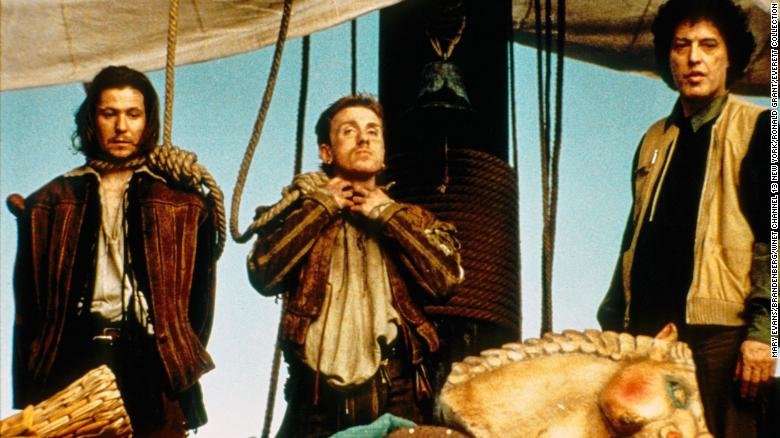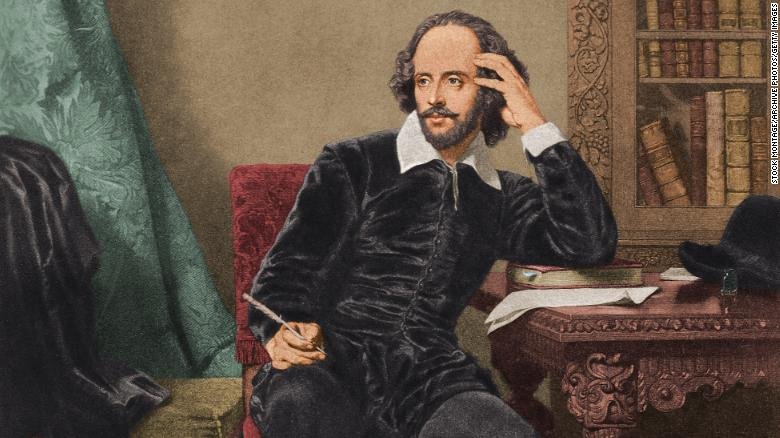The film “The Northman” is not based on William Shakespeare’s “Hamlet.”
Instead, the film, which stars Alexander Skarsgrd, Nicole Kidman, Anya Taylor-Joy, Ethan Hawke, Björk, and Willem Dafoe, is an adaptation of one of Shakespeare’s sources, the legend of Amleth in Saxo Grammaticus’ “History of the Danes.” “The Northman” takes the place of “Hamlet.”
However, most people nowadays are only familiar with Saxo because of Shakespeare. “The Northman,” which premiered in the United States on April 22, one day before the yearly celebrations of Shakespeare’s birthday on April 23, uses the same Shakespearean text it avoids.
“The Northman” is a Shakespherean adaption (notice the spelling), a retelling inspired by materials that aren’t Shakespeare’s texts but are well-known in Shakespeare’s context today.

It’s a different kind of Shakespearean adaptation than Stephen Spielberg’s “West Side Story,” which is one of the most well-known in the category. Shakespeare’s “Romeo and Juliet” was a 1595 stage adaptation of a 1562 English poem that translated a 1560 French translation of a 1535 Italian novella. It was a 1961 film adaptation of a 1957 stage adaptation of Shakespeare’s “Romeo and Juliet,” which was a 1595 stage adaptation of a 1562 English poem that translated a 1560 French translation of a 1535 Italian novella. “West Side Story” is a refraction of adaptations, whereas “The Northman” elides Shakespeare’s text.
We’re living in a time when Shakespherean adaptations abound, complete with elisions and refractions. The centre is removed in an elision. While avoiding Shakespeare’s actual text, Netflix’s “The King” capitalised on Shakespearean connotations with England’s Henry V to build an audience. It told the same plot as Shakespeare, but in a more contemporary style.
A refraction is an infinite mirror that reflects Shakespeare into the void. The Netflix series “House of Cards,” an American streaming television adaptation of a British cable version of an earlier literary adaptation of Shakespeare’s “Richard III,” a play about politics, ambition, and villainy, has adaptation refraction (itself based on earlier English plays and histories).

“Macbeth” by Joel Coen is a straightforward adaption. It only earns bonus points due of Denzel Washington. In the business world, “Succession” and “Empire” are regular interpretations of King Lear. There is nothing to see here. Daisy Ridley starred in the film “Ophelia,” which explored the narrative behind her character in Shakespeare’s play. These shows work in the same way that earlier adaptations like Akira Kurosawa’s “Throne of Blood” (based on “Macbeth” from 1957), Tom Stoppard’s “Rosencrantz and Guildenstern Are Dead” (based on “Hamlet” from 1966), Julie Taymor’s “Titus” (based on “Titus Andronicus” from 1999), and Vishal Bhardwaj’s “Omkara” (based on
However, that previous era of adaptation has already become tradition. What was once revolutionary has become dated. When adaptation has been done to death, how will writers achieve something new with Shakespeare?
They’ll go deeper into the Shakesphere, the vast universe of sources, contexts, performances, criticism, adaptations, and appropriations that surround Shakespeare’s plays and works. He is the sun that binds this system together, but if you approach too close to him in this new era, you might get burned.

Both refraction and elision were present in “Game of Thrones.” HBO produced a television version of George R.R. Martin’s novels, which adapted the English history of the Wars of the Roses, which Shakespeare wrote multiple plays about. Martin, on the other hand, did not directly copy Shakespeare’s plays. He circled Shakespeare to learn about the history of his plays. (HBO and CNN are owned by the same firm.)
Shakespherean adaptations, on the other hand, neglect his texts in order to focus on the playwright’s life. The technique of “Shakespeare in Love” is used in films like “All Is True” and television dramas like “Upstart Crow” and “Will,” which interpret plots and characters from the plays back into the life of their author.
“Station Eleven,” on the other hand, is about Shakespeare’s afterlives. The HBO miniseries, which is based on an Emily St. John Mandel novel, depicts the narrative of a post-apocalyptic Shakespearean playing troupe rather than adapting one of Shakespeare’s plays.

Elisions, refractions, speculative biographies, and theatrical afterlives — these Shakespherean adaptations take advantage of the playwright’s cultural clout to attract an audience while avoiding his plays and poems. Shakespeare’s push and pull in these adaptations reflects the mixed feelings many people have about the author.
Shakespeare is shoved down our throats at school, and his stories are captivating, the language beautiful, and the performances inspiring. Alexander Skarsgrd’s superbly sculpted Viking abs in “The Northman” are a godsend to English professors who have to sell “Hamlet” to high-school pupils every year.
Authors and audiences can embrace and reject Shakespherean adaptations at the same time. This method can be traced back to a 1681 “King Lear” that went around Shakespeare’s 1605 play in order to restore the happy ending. On Broadway, “The Lion King” was Shakespherean, as it was an adaption of “Hamlet.” Saxo Grammaticus’ first film credit isn’t even “The Northman.” Christian Bale played Saxo’s Amleth in the 1994 film “Prince of Jutland.” However, the genre has moved from the fringes to the mainstream, with larger budgets and audiences.
Some people will like these stories without feeling as though they’re being spoon-fed Shakespeare. Others relish the chance to delve into specialised information that extends beyond the plays to their sources and afterlives. Scholars like me adore Shakespherean adaptations because they demonstrate the wacky ways in which literature travels through time.
Typically, audiences interact immediately with entertainment — did you enjoy it or despise it? Adaptations can work in a variety of ways. Audiences frequently go beyond the tale in front of them to examine how it compares to the source material — what’s similar and what’s different? The focus swings away from the story’s internal aspects, such as storyline, character, and subject, and toward questions concerning the artwork’s creation. Finding and mapping out the rich, centuries-long literary histories underlying Shakespherean adaptations is one of the pleasures of Shakespherean adaptations.
Shakespeare’s birthday is April 23rd, and you may want to commemorate it or remove him from the curriculum. Shakespherean adaptations lead us beyond personal preferences to a better grasp of how we get here. They contribute to our understanding of why this 400-year-old English dramatist is still such a huge cultural phenomenon in the current world. They assist us in visualising Shakespeare’s progression over time.


